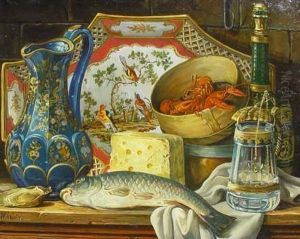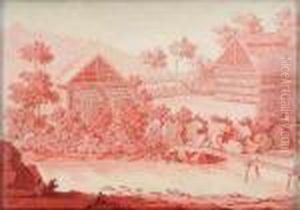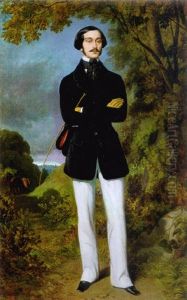Marie-Alexandre Adolphe Paintings
Marie-Alexandre Adolphe, whose full name was Marie-Alexandre Alophe, was a French painter, lithographer, and photographer who lived during the 19th century. Born on March 6, 1828, in Paris, France, Adolphe became known for his works in portraiture and his contributions to the development of photography in its early stages.
Adolphe began his artistic career as a lithographer before turning to photography, which was a burgeoning art form and technology at the time. He was active during a period of great innovation and change in the visual arts, which saw the rise of photography as a serious medium alongside traditional forms of painting and printmaking.
Throughout his career, Adolphe was recognized for his portrait photography. He was particularly adept at capturing the likenesses of notable figures of his time, which included artists, writers, and politicians. His work was characterized by a keen attention to detail and a strong sense of composition, which allowed him to create images that were both technically proficient and aesthetically pleasing.
Despite his achievements, Marie-Alexandre Adolphe remains a relatively obscure figure in art history. Much of his life and work have been overshadowed by his contemporaries, some of whom are considered the great masters of painting and early photography. Nevertheless, his contributions to the development of portrait photography are still acknowledged by scholars and enthusiasts of the medium.
Marie-Alexandre Adolphe's death occurred in the year 1900, at the age of 72, in his native city of Paris. Although he may not be as widely recognized as other artists of his era, his work remains a part of the rich tapestry of 19th-century French art and the early history of photography.


